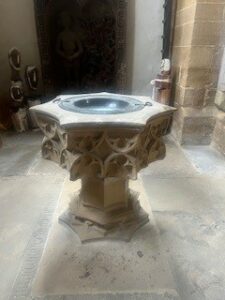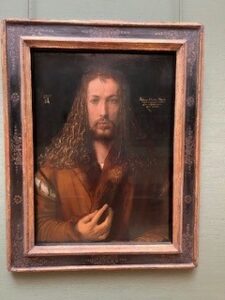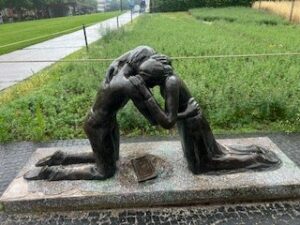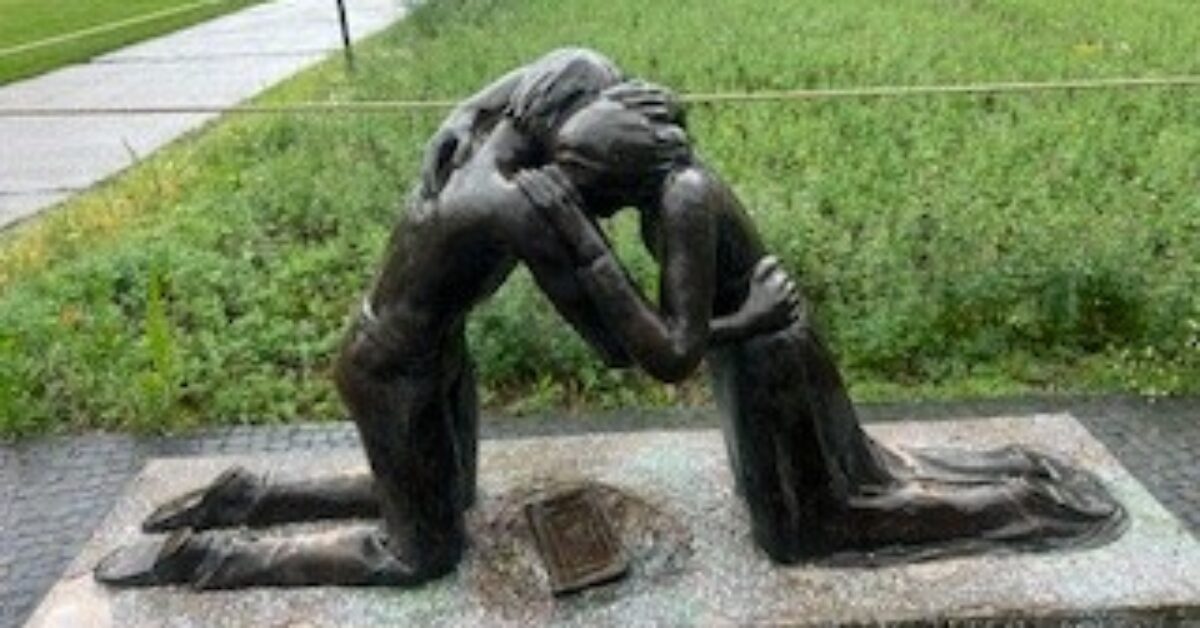Juxtaposing: Becoming Aware of Being Imitators of Jesus
When I was in Germany 37 years ago the wall dividing West and East Berlin had not yet come down. We visited East Berlin, going through Checkpoint Charlie. One of the things I remember about East Berlin was the drabness of East German and Soviet construction: bland, grey building after bland, grey building. When I entered Berlin this time, I realized as we rode the train from the airport to the central train station that we were passing through the former East Berlin. And my jaw dropped. There were still some of the old drab buildings. But next to them were colorful, innovative new buildings clearly constructed since 1990. Startling juxtapositions.
In many ways that was my experience on this trip to Germany: A series of juxtapositions. This was a spiritual pilgrimage for our family. None of us had ever visited the Luther sights in East Germany, so going to Wittenberg, the Wartburg, Erfurt, and Leipzig immersed us in the promises of God’s Word into which we were submersed in our baptisms (represented by the font in the Roman Catholic cathedral, St. Mary’s, in Erfurt).
We stayed in Berlin, the capitol of a united Germany. But juxtaposed to that unity are the signs of a formerly divided Germany. We walked the length of the Berlin Wall Memorial, parts of the wall still intact, to remind subsequent generations of the conflict, separations, divisions, and death that the Cold War created.
There are of course other juxtapositions to the sights of faith and hope. The remnants of Hitler’s Nazi regime cannot be avoided (nor should they be). The moving Memorial to Murdered Jews, near the Brandenburg Gate and Hitler’s former bunker that is now a parking lot, juxtaposes the evil that humans can inflict on one another and the whole creation with the call to trust in the God of creation. Entire cities can be juxtapositions. We visited Nuremburg and stood in the cathedral church of St. Lorenz—which survived but was damaged—aware that outside of that core historic part of the city, 90% of the remainder of the city was destroyed during World War II. Juxtapositions abound in the land of the Reformation: peace and conflict, unity and division, life and death, despair and hope.
Museums manifest those juxtapositions in abundance. For example, Van Gogh’s lilies just down the hall from Albrecht Dürer’s self portrait.

And that self-portrait is itself a juxtaposition. Dürer painted himself according to the model medieval paintings of the head of Christ. Dürer juxtaposing himself to Christ.
Creating such juxtapositions is at the heart of the catechumenate. The woman at the well juxtaposed to where we find our identity and hope. The young rich man asking Jesus what he must do to attain eternal life juxtaposed to those things we are chasing after. The entire story of God in Christ juxtaposed to the sin, conflict, division, evil, and death we perpetrate and experience.
And out of those juxtapositions we should envision the world and ourselves in line with Dürer’s own vision of himself: conformed to Christ. As Paul says in Ephesians 5:1-2, “Therefore be imitators of God as dear children. And walk in love, as Christ also has loved us and given Himself for us, an offering and a sacrifice to God for a sweet-smelling aroma.”
The Berlin W all Memorial led to this sculpture, “Reconciliation.” There, juxtaposed to the no-man’s land between the wall’s divisions, it lies encouraging us to strive toward the vision of peace overcoming conflict. That is the imitation toward which the juxtapositions of the catechumenate should lead. “Now all things are of God, who has reconciled us to Himself through Jesus Christ, and has given us the ministry of reconciliation, that is, that God was in Christ reconciling the world to Himself (2 Corinthians 5:18-19).
all Memorial led to this sculpture, “Reconciliation.” There, juxtaposed to the no-man’s land between the wall’s divisions, it lies encouraging us to strive toward the vision of peace overcoming conflict. That is the imitation toward which the juxtapositions of the catechumenate should lead. “Now all things are of God, who has reconciled us to Himself through Jesus Christ, and has given us the ministry of reconciliation, that is, that God was in Christ reconciling the world to Himself (2 Corinthians 5:18-19).
